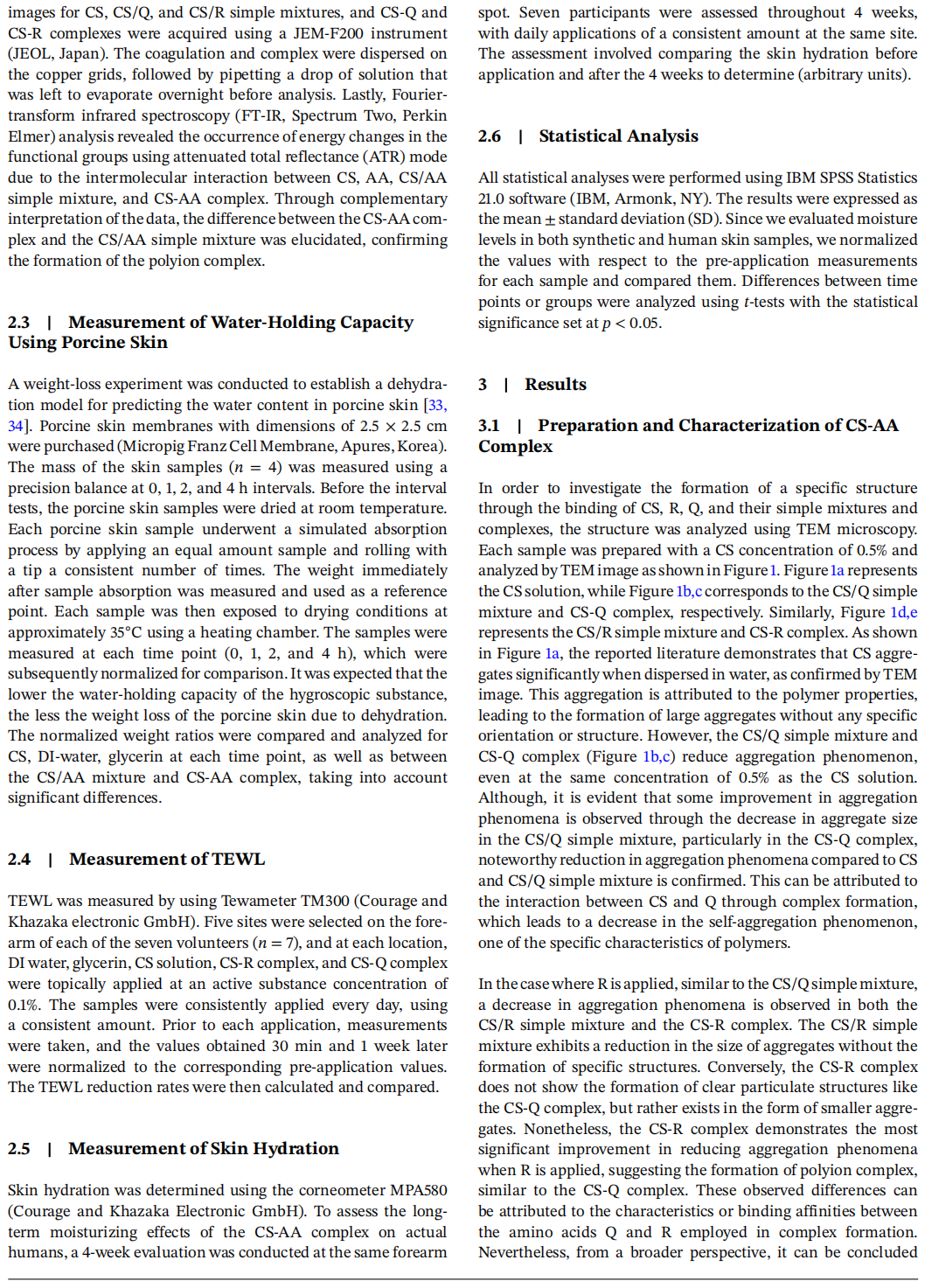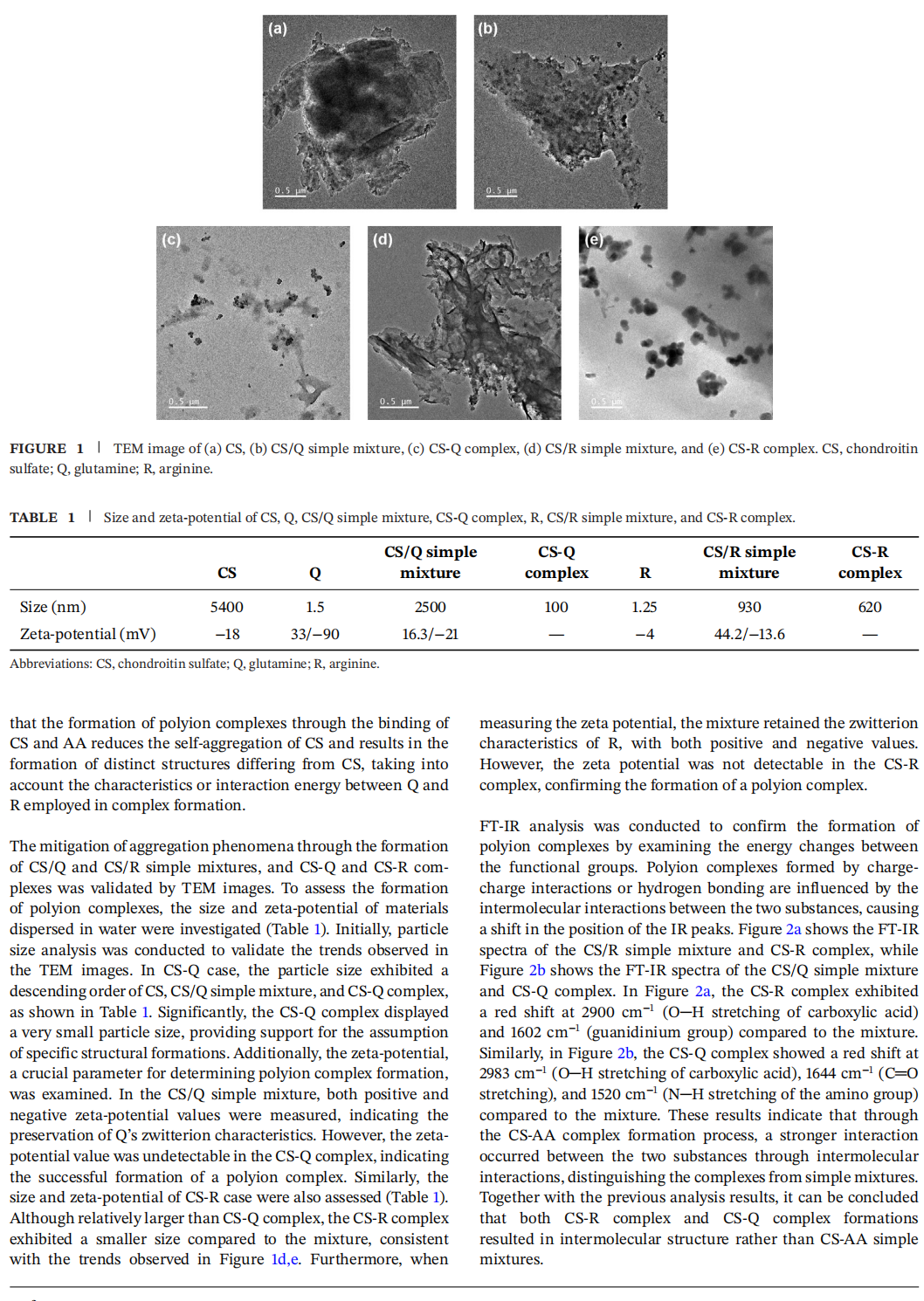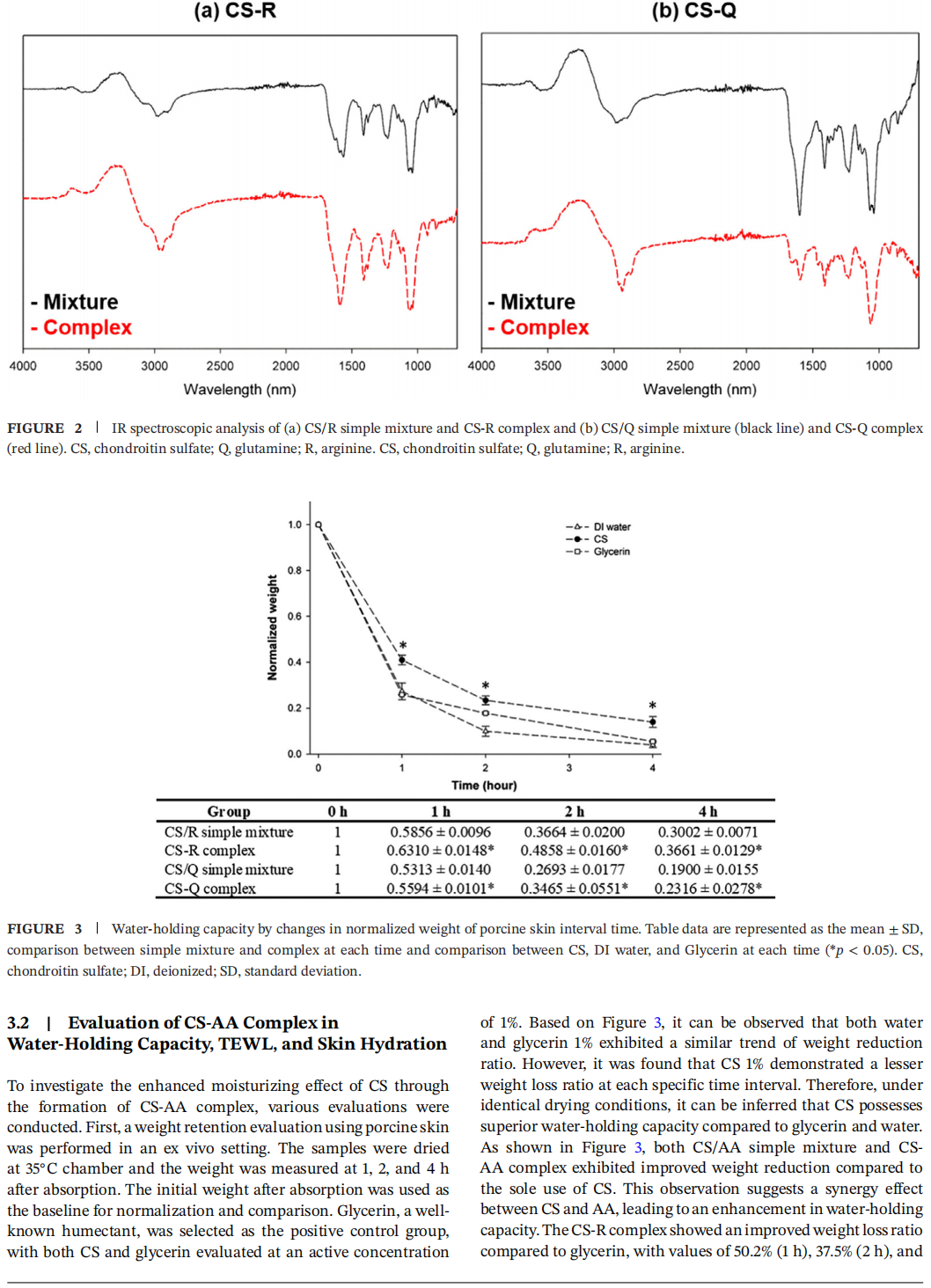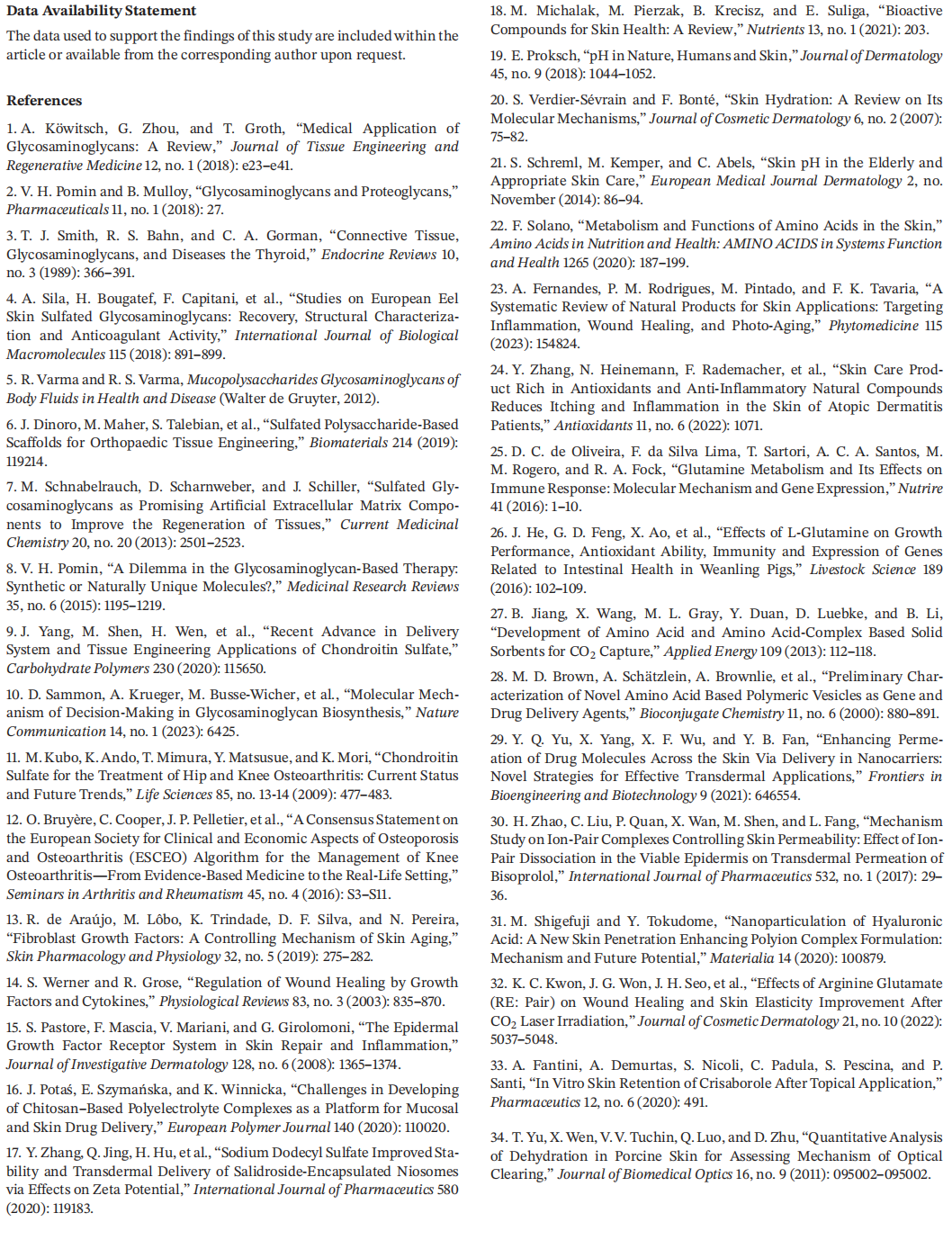






This article is excerpted from the Skin Research and Technology, 2024 by Wound World.
Hyungjoon Jeon Yong Won Shin Jong Gu Won Nojin Park Sang-Wook Park Nam Seo Son Mi-Sun Kim
LG Household & Health Care (LG H&H), LG Science Park R&D Center, Seoul, Republic of Korea
Correspondence: Hyungjoon Jeon (该Email地址已收到反垃圾邮件插件保护。要显示它您需要在浏览器中启用JavaScript。) Mi-Sun Kim (该Email地址已收到反垃圾邮件插件保护。要显示它您需要在浏览器中启用JavaScript。)
Received: 29 January 2024
Revised: 21 June 2024
Accepted: 19 July 2024
Keywords: arginine | chondroitin sulfate | glutamine | skin hydration | TEWL | water-holding capacity
ABSTRACT
Purpose: The study explored the enhanced skin moisturizing capabilities and moisture retention effects achieved by forming a polyion complex using sulfated glycosaminoglycan (GAG), specifically chondroitin sulfate (CS), and amino acids (AA) such as glutamine (Q) and arginine (R). The overall hydration effect of this CS-AA complex was examined.
Methods: After analyzing the CS-AA polyion complex structure using spectroscopic methods, the ex vivo moisture retention ability was assessed under dry conditions using porcine skin samples. Additionally, the efficacy of the CS-AA polyion complex in reducing transepidermal water loss (TEWL) and improving skin hydration was evaluated on human subjects using a digital evaporimeter and a corneometer, respectively.
Results: Validating a systematic reduction in particle size, the following order was observed: CS > CS/AA simple mixture > CSAA complex based on dynamic light scattering (DLS) and transmission electron microscopy (TEM) analysis. Furthermore, observations revealed that the CS-AA complex exhibits negligible surface charge. Additionally, Fourier-transform infrared spectroscopy (FT-IR) analysis demonstrated a distinct peak shift in the complex, confirming the successful formation of the CS-AA complex. Subsequently, the water-holding effect through porcine skin was assessed, revealing a notable improvement in moisture retention (weight loss) for the CS-Q complex: 40.6% (1 h), 20.5% (2 h), and 18.7% (4 h) compared to glycerin. Similarly, the CS-R complex demonstrated enhancements of 50.2% (1 h), 37.5% (2 h), and 33% (4 h) compared to glycerin. Furthermore, TEWL improvement efficacy on human skin demonstrated approximately 25% improvement for both the CS-Q complex and CS-R complex, surpassing the modest 12.5% and 18% improvements witnessed with water and glycerin applications, respectively. Finally, employing a corneometer, hydration changes in the skin were monitored over 4 weeks. Although CS alone exhibited nominal alterations, the CS-Q complex and CS-R complex showed a significant increase in moisture levels after 4 weeks of application.
Conclusion: In this study, polyion complexes were successfully formed between CS, a sulfated GAG, and AA. Comparisons with glycerin, a well-known moisturizing agent, confirmed that the CS-AA complex exhibits superior moisturizing effects in various aspects. These findings suggest that the CS-AA complex is a more effective ingredient than CS or AA alone in terms of efficacy.







This article is excerpted from the Skin Research and Technology, 2024 by Wound World.
